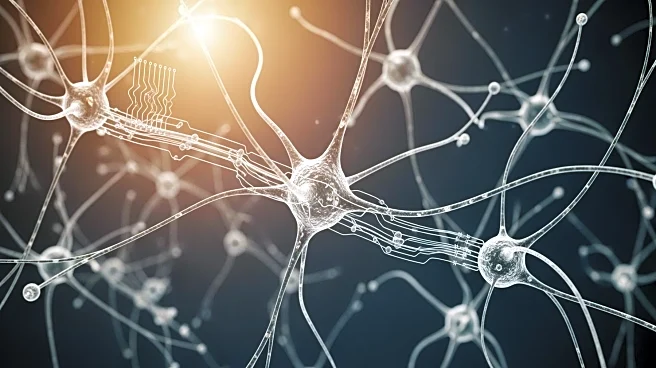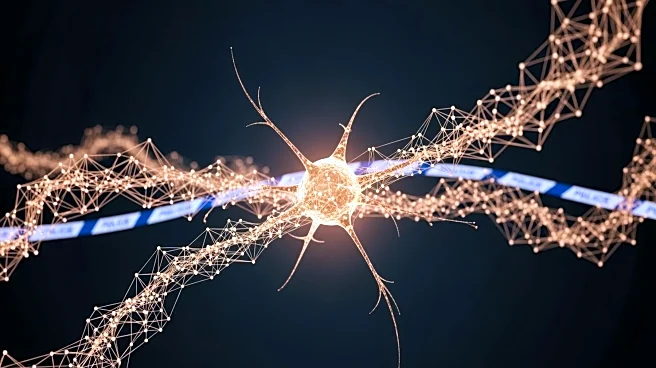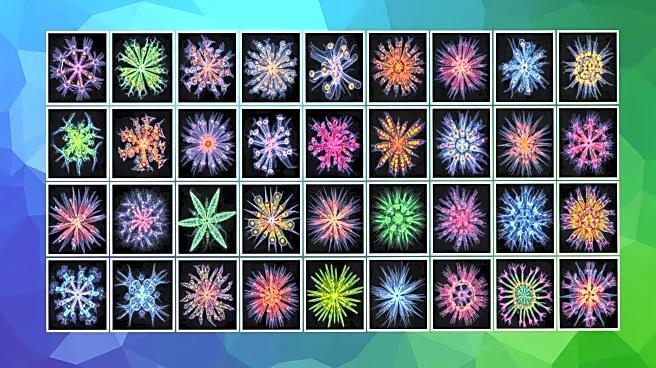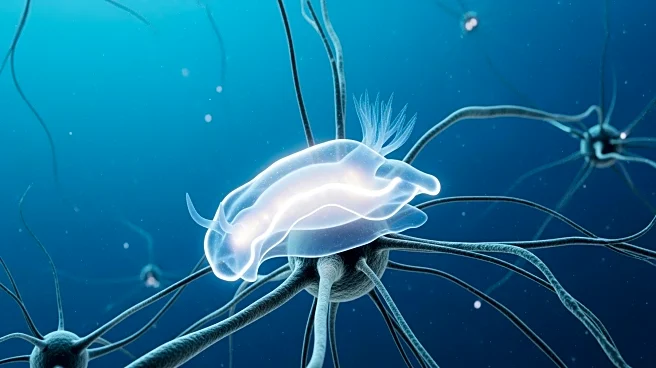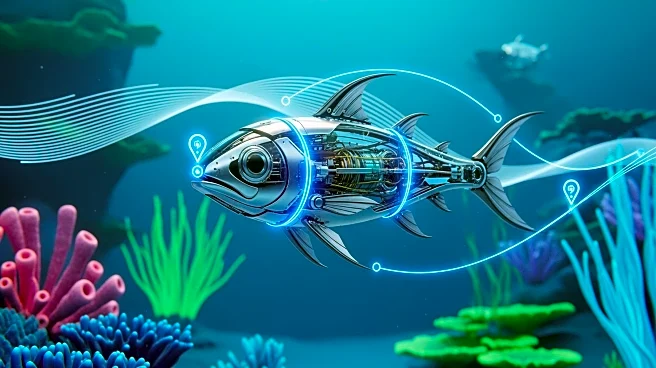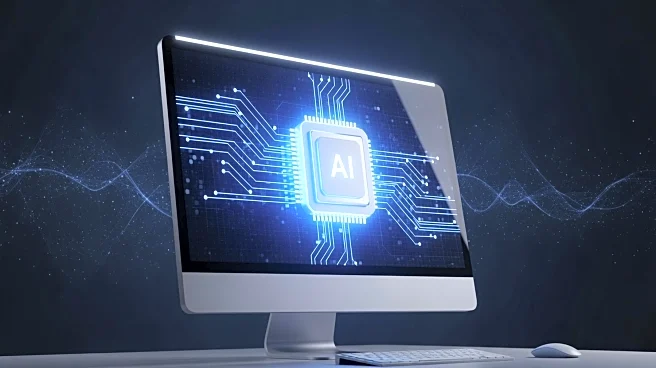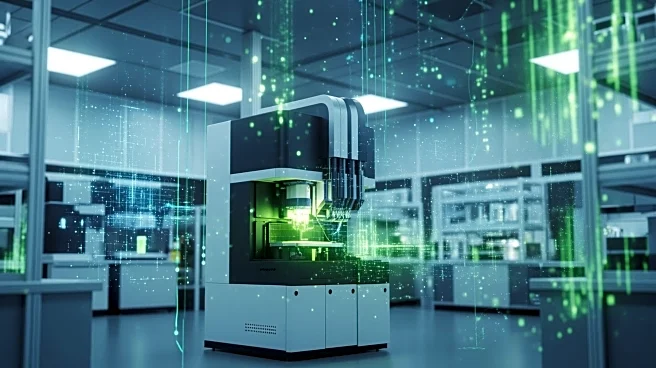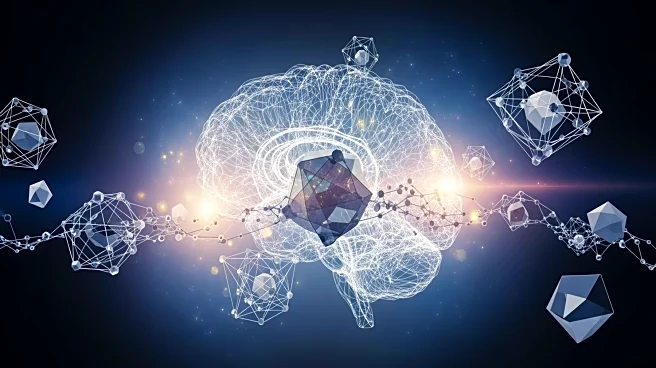What's Happening?
A recent study has explored the behavior of neurons exhibiting pinched hysteresis loops, a characteristic of memristors, which are components used in neuromorphic computing. The research involved neurons differentiated
from the human fetal ventral mesencephalic neural progenitor cell line, which were modified to express Channelrhodopsin-2. The study focused on recording and modeling these loops under various conditions, including current and voltage clamps with sinusoidal oscillations. The findings suggest that neurons can exhibit memristor-like properties, which could have significant implications for understanding brain function and developing advanced computing systems.
Why It's Important?
The discovery of memristor-like behavior in neurons could revolutionize the field of neuromorphic computing, which aims to mimic the brain's neural architecture to create more efficient and powerful computing systems. This research provides insights into the fundamental properties of neurons, potentially leading to breakthroughs in artificial intelligence and machine learning. By understanding how neurons process information, scientists and engineers can develop new technologies that replicate these processes, leading to advancements in computing power and efficiency. This could benefit industries reliant on data processing and analysis, such as finance, healthcare, and technology.
Beyond the Headlines
The study raises ethical and philosophical questions about the intersection of biology and technology. As researchers continue to explore the capabilities of neurons in computing, considerations around the implications of creating systems that closely mimic human brain function become increasingly important. The potential for such technology to impact privacy, security, and the nature of human-machine interaction warrants careful consideration and regulation. Additionally, the research highlights the importance of interdisciplinary collaboration between neuroscientists, engineers, and ethicists to navigate the complex challenges posed by these technological advancements.
